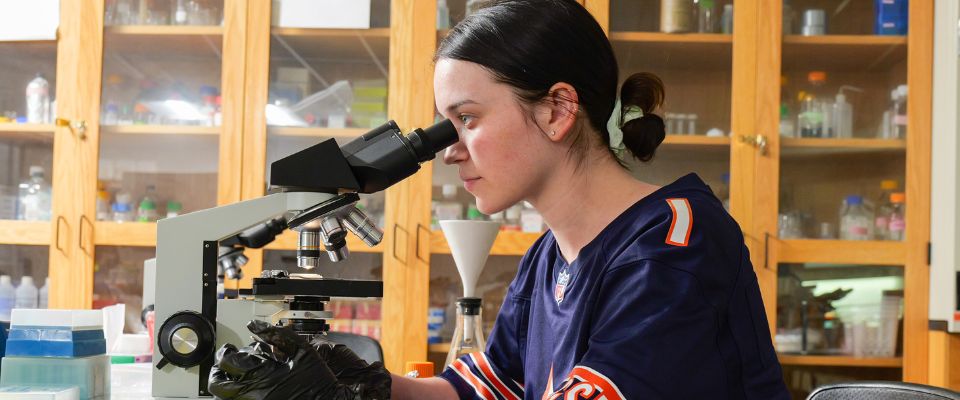
Chemistry
As a chemistry student at Stetson, you'll examine the structure and behavior of matter at the atomic and molecular levels. This field is closely linked to almost all areas of science and technology, opening up a wide range of opportunities for you. You'll gain hands-on experience and in-depth knowledge of molecular principles through coursework, labs, senior research projects and internships.
Why Chemistry at Stetson University?
At Stetson, our chemistry program offers comprehensive instruction led by dedicated faculty who focus on your needs and interests. You'll gain a deep understanding of major chemistry concepts, along with essential skills in problem-solving, teamwork and communication. Our program is certified by the American Chemical Society (ACS), ensuring you receive top-quality education to become an effective scientific professional. With foundational coursework in the five subdisciplines of chemistry and additional in-depth courses and lab experiences, you'll be well-prepared for a successful career in science.
Learn more about the Department of Chemistry.
Related Programs:
Interested in this program?
Take the next step and let us know that you were here.

"I took an organic chemistry class ... and that kind of beauty, that ability to dive into something and explain it captured me. I was working with my mentor and I was like, 'Hey, we're probably some of the first people who've ever done this, right?' He said, 'No, we're definitely one of the first.' "
Luis Melecio-Zambrano ’18 Chemistry, MS Chemistry ’20, Cornell University, currently science writer at University of Pennsylvania

"When I first arrived at Stetson, I was your run-of-the-mill, math-and-science geek. I can point to a lot of reasons that changed, but the crux of it came down to one thing: Stetson. Cultivates. Character."
Darash Desai, 08’ Biochemistry and Physics, PhD ’14 Biomedical/Medical Engineering, Boston University, currently Senior Research Scientist at Boston University
Career Outcomes
Employment for chemists and materials scientists is projected to grow 6% through 2030, with a median annual wage of $79,430 as of May 2021, according to the U.S. Bureau of Labor Statistics.
Half of our recent graduates have pursued advanced degrees at leading institutions like Notre Dame, Duke, Cornell, Georgetown, Vanderbilt, Georgia Tech, Johns Hopkins Medical School, University of Florida and the University of Michigan.
Our alumni work in environmental labs, healthcare and consumer product manufacturing and education as high school teachers and college professors. With skills in data analysis, budgeting, product development, technical writing, or Python coding, you may receive higher-than-average salary offers.




As you begin your journey, you will work with some of our distinguished faculty and dedicated professionals who will provide you with personal attention and expert guidance to help you thrive academically and professionally.
- Delphine Prevote Pinet, PhD, University Paul Sabatier, Toulouse, France
- Harry Price, PhD, University of Illinois
- John York, PhD, University of Minnesota
- Matthew Shannon, PhD, Ohio State University
- Paul Sibbald, PhD, University of Washington
You can earn an ACS-certified Bachelor of Science degree in Chemistry or Biochemistry, at Stetson, recognized nationally by the American Chemical Society.
You'll take two units of general chemistry, five foundational courses, three in-depth courses and complete a senior research project to fulfill the requirements for the ACS-certified major. This rigorous curriculum prepares you for advanced study and careers in diverse fields such as medicine, plastics, environmental science and alternative energy production.
Visit Stetson
See for yourself why Stetson continues to be a top spot for learning and exploring.
VisitFinancial Aid
Learn more about the tools you can tap into to make your college experience affordable.
Explore